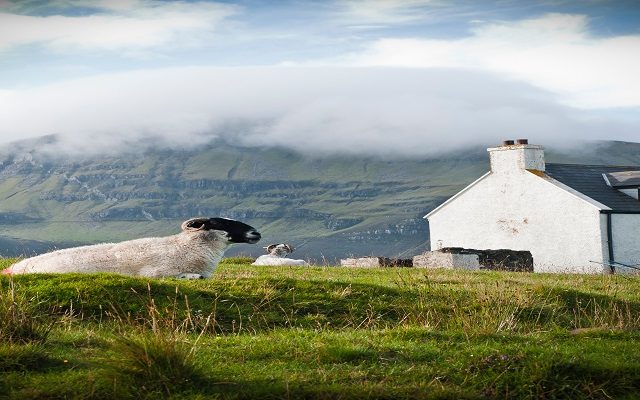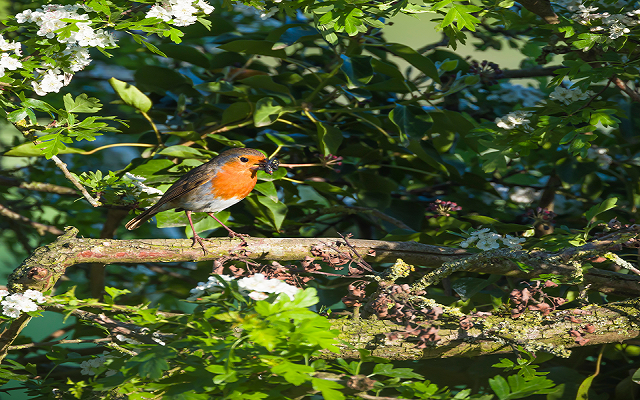Land Business Update | Week Commencing 4th November
Welcome to our update on key land management, farming, planning and energy issues.
Grants of up to 40% available through reopened Growth Programme, probably for the last time
Defra has reopened this grant in England for a final tranche of applications. It funds projects which create new jobs, increase business turnover and improve productivity that are related to growing businesses, rural tourism and food processing. The minimum grant threshold has been reduced to £20,000 to encourage smaller businesses to apply and the maximum is around £175,000. The deadline for submitting an expression of interest is 16th February 2020. Please contact Charles Garrard for further details or our factsheets.
Farming
More than 3,000 farmers awarded grants in round two of the Countryside Productivity Small Grants scheme
The government claims to have funded all eligible applications – 3,600 of them – and will make £22m of payments, which is almost 50% more than under round one. Farmers who have been awarded a grant should now speak to the suppliers of the machinery they want to confirm that it is available before accepting their grant by using the acceptance portal by 10th November. All machinery and equipment must be ordered, paid for and a claim submitted by the end of May 2020.
Scottish Government makes changes to its funding under the SRDP to avoid underspend and target priorities
The Scottish Government is applying to the European Commission to amend the Scottish Rural Development Programme for 2014 – 2020 in order to increase the proportion of funding by the EU (to 52%), and to switch funding from schemes that are underspent (such as the Beef Efficiency Scheme) to schemes that help achieve government priorities (such as the Forestry Grant Scheme). It is also going to extend some Agri-Environment Climate Scheme (AECS) agreements for another year.
EU and China agree bilateral deal on Geographical Indications (GIs) to protect against imitations
The agreement will protect both EU and Chinese products. China is already the EU’s second largest market for agri-food exports and for exports of GI products. The agreement is likely to come into effect before the end of 2020, following legal scrutiny.
European Parliament blocks Commission proposals that would weaken protection for pollinators
The EP wants new legislation, that is designed to incorporate the European Food Safety Authority’s guidance on pollinators into law, to require pesticides to be tested for both acute (which is single or short-term exposure) and chronic (which is built up over long-term) toxicity for honeybees, bumble bees and solitary bees. Around 84% of crop species and nearly 80% of wildflower species depend, at least in part, on animal pollination in Europe. Almost €15 billion of the EU’s annual agricultural output is directly attributed to insect pollinators, according to figures cited by MEPs. Separately, Member States have voted against renewing the EU license for the neonicotinoid pesticide Thiacloprid. This follows a large public petition against it due to its links to cancer and reproductive issues in farm workers, and evidence that it harms bees and other pollinators. The ban will come into effect in April 2020 when the current license expires.
Energy
Government proposes to ban fracking immediately in Britain due to the “unacceptable” risk of earthquakes
The decision to implement a ‘presumption against issuing any further Hydraulic Fracturing Consents’ follows a review by the Oil and Gas Authority that concluded that it is impossible to predict the probability or scale of earthquakes causes by the geological fracturing. The move is a significant change in policy for the government. The ban will last until there is ‘compelling evidence’ that it can be carried out safely, which the fracking industry has said it will work to provide. The tremor in August in Lancashire that was the trigger for the ban was 25 times bigger than Cuadrilla, the frackers, had predicted
Environment
RSPB to conduct review of the environmental impact of reared bird shooting, which may lead to a change in policy
The RSPB currently campaigns against the shooting of wild birds, including driven grouse shooting. To date, it has not criticised the shooting of birds raised for game shooting, such as pheasants and partridges. It has announced that it is conducting a review of the evidence on the environmental impact of pheasant and partridge shooting which may lead to a change in its policy. It says it will only change its policy on lowland shooting if there are conservation issues at stake. Martin Harper, their global conservation director, says that the review will consider issues including the impact on the environment of the release of up to 50 million non-native pheasants and partridges each year, the (possibly associated) increase in generalist predators, the use of medicated grit and lead shot, and the impact on species of conservation concern, including waders and birds of prey. The review will also consider land management practices linked to shooting, as they can have an effect on biodiversity and climate change. The RSPB’s policy is to be neutral on the issue of shooting and killing animals, as it says it is a nature conservation charity and not an animal welfare one.
Forestry
Government will buy carbon credits for 35 years through new Woodland Carbon Guarantee scheme
The scheme is an attempt to encourage more trees to be planted. Under it, the government will pay successful participants for the ‘Woodland Carbon Units’ that their new woodlands produce. The price paid is set by a reverse auction, so that land managers bid the lowest price that they are willing to provide the carbon units for; once agreed, the price is guaranteed (and index-linked to the CPI) for 30 or 35 years up until 2055/56. To apply, land managers must register their projects with the Woodland Carbon Code. Auctions will initially be held on a national basis every 6 months for 4 or 5 years, depending on the rate of uptake and available funds. For further details, please contact Jon Lambert
Property
How to reduce condensation in buildings during the winter
Condensation does not just occur on wall surfaces, it happens inside walls too, and can be a common problem in older houses; it can also happen in newer ones as well. Key signs are damp patches, black spot mould, wet window cills, wall paper peeling and mildew. There may be different causes of condensation but common approaches to dealing with it include ensuring there is airflow by using window vents, ventilation bricks and opening windows; using extraction fans in bathrooms and showers; turning the heating down as a lower temperature means less water can go into suspension in the air; leave heating on very low all the time and avoid running it on an on/off cycle. Please contact Dave Bates, building surveyor, if you would like to discuss.
Telecoms
Government hopes for agreement on Shared Rural Network in early 2020
The government has said that it will ‘champion’ a £1 billion deal with the mobile phone industry to banish rural not-spots. Under the agreement, EE, O2, Three and Vodafone would invest an estimated £530 in a network of new and existing phone masts, called the Shared Rural Network, that they would all share. In addition, the government will commit up to £500 million of investment to eliminate total not-spots, where there is currently no coverage from any operator. If the network operators cannot demonstrate that all reasonable efforts have been made to comply with the obligations, they can be fined up to 10% of annual turnover. The proposal has been welcomed by the CLA but criticised by the Rural Services Network as the target of reaching 95% coverage by 4G networks has been pushed back from the Government’s previous stated ambition of 2022 to 2025, which is six years away. According to Ofcom, current geographic 4G mobile coverage, where a signal is available from all four providers, is at 66%. S&P comment: whilst this deal may be struck, there is still no incentive for the operators to actually provide more rural coverage. Even if the costs of rolling out are halved, the returns from a handful of houses in a rural community still won’t cover the associated costs. Arguably, the failure of the Mobile Infrastructure Project is all the evidence needed to make this clear.






